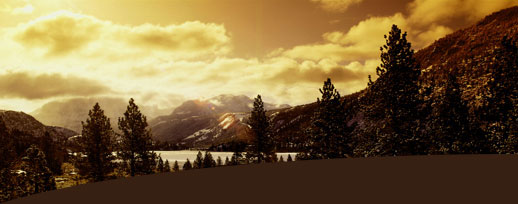
Aosta (Dolina Aosty/Valle d'Aosta/Aosta Valley)
Aosta - miejscowość i gmina we Włoszech, stolica regionu Dolina Aosty. Wg danych na rok 2004 gminę zamieszkuje 33 926 osób; 1615,5 os./km².
Zabytki:
- pozostałości budowli z czasów rzymskich - ruiny amfiteatru, murów miejskich, 2 bram, mostu, forum, świątyń oraz łuku triumfalnego Augusta
- kościół kolegiacki S. Orso z XII, XV w. wraz z kryptą pochodzącą z VIII w.
- romańska katedra, która została przebudowana w XV-XVI w.
- kościoły i pałace z XVII, XVIII w.
IN ITALIANO
Aosta è un comune di poco meno di 35mila abitanti, sparsi per dodici differenti centri abitati (quello omonimo e 11 frazioni), dell' Italia settentrionale, capoluogo della regione autonoma della Valle d'Aosta.
Monumenti e luoghi d'interesse:
Area megalitica di Saint-Martin-de-Corléans
Area funeraria fuori Porta Decumana di Aosta
IN ENGLISH
Aosta is the principal city of the bilingual Aosta Valley in the Italian Alps, 110 km (68 mi) north-northwest of Turin. It is situated near the Italian entrance of the Mont Blanc Tunnel, at the confluence of the Buthier and the Dora Baltea, and at the junction of the Great and Little St. Bernard routes. Aosta is not the capital of the province, as these functions are shared by the region and the communes.
Main sights:
The ancient town walls of Augusta Praetoria Salassorum are still preserved almost in their entirety, enclosing a rectangle 725 by 571 m. They are 6.4 m high, built of concrete faced with small blocks of stone. At the bottom, the walls are nearly 2.75 m thick, and at the top 1.83 m.
Towers stand at angles to the enceinte and others are positioned at intervals, with two at each of the four gates, making twenty towers in total. They are roughly 6.5 m square, and project 4.3 m from the wall. Of the 20 original towers, the following are well preserved:
- Tour du lépreux, which has been given this name after a leper was jailed there in the late 17th century. Le lépreux de la cité d'Aoste, a novel by Xavier de Maistre, was named after this tower.
- Tour Neuve (13th century).
- Tour du Pailleron.
- Tower (Castle) of Bramafan, built in the 11th century over a Roman bastion. It was the residence of the Savoy viscounts. The Franco-Provencal term Bramafan is translated as "He who screams for hunger".
- Tour du Baillage.
- Tour Fromage.
The east and south gates exist intact. The latter, a double gate with three arches flanked by two towers known as the Porta Praetoria (1st century AD) was the eastern gate to the city, and has preserved its original forms apart from the marble covering. It is formed by two series of arches enclosing a small square.
The rectangular arrangement of the streets is modeled on a Roman plan dividing the town into 64 blocks. The main road, c. 10 m wide, divides the city into two equal halves, running from east to west. This arrangement makes it clear that guarding the road was the main raison d'etre of the city.
The Roman theatre, of which the southern façade remains today, 22 m tall. The structure, dating from the late reign of Augustus, occupied an area of 81 x 64 m: it could contain up to 4,000 spectators. In the nearby was the amphitheatre, built under Claudius. A marketplace surrounded by storehouses on three sides with a temple in the centre with two on the open (south) side, as well as a thermae, also have been discovered.
Outside the town is a triumphal arch in honour of Augustus, built in 35 BC to celebrate the victory of consul Varro Murena over the Salassi. About 8 km to the west is a single-arched Roman bridge, called the Pont d'Ael. It has a closed passage, lighted by windows for foot passengers in winter, and above it an open footpath, both being about 10 m in width.
- The Cathedral, built in the 4th century and replaced in the 11th century by a new edifice dedicate to the Madonna. It is annexed to the Roman Forum.
- The Romanesque-Gothic Sant'Orso. Its most evocative feature is the cloister, which can be entered through a hall on the left of the façade. It is dedicated to Ursus of Aosta.
- The Saint-Bénin College, built about 1000 by the Benedictines. It is now an exhibition site.